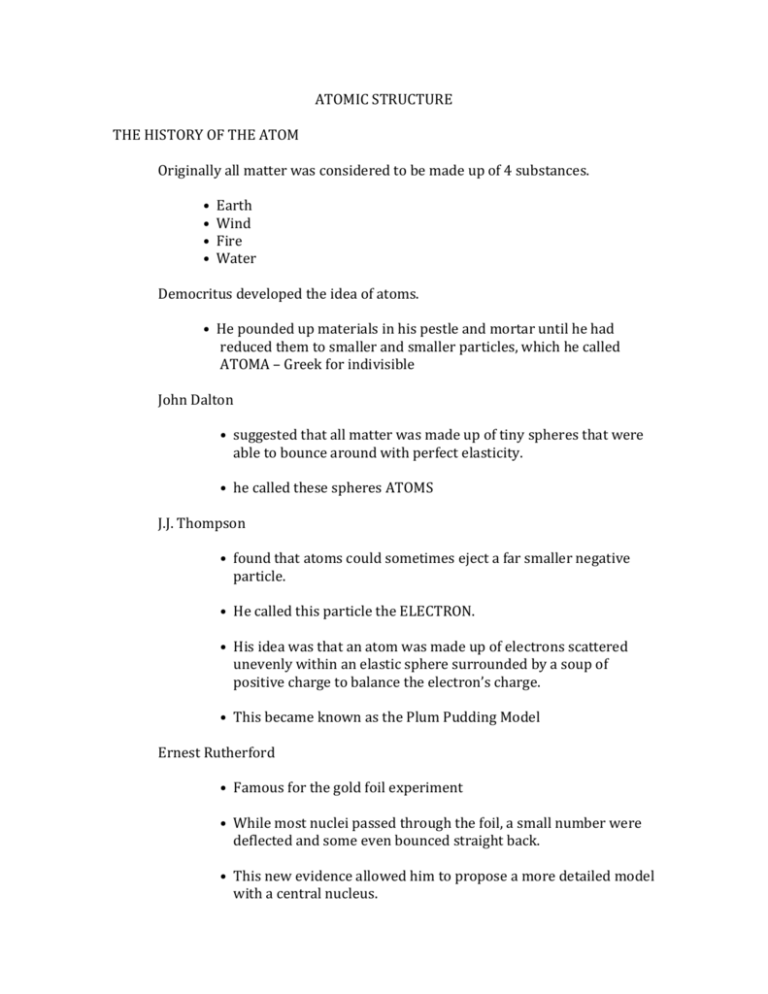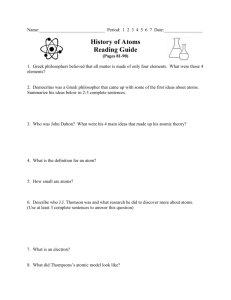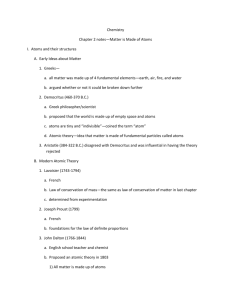Class notes on atomic theory
advertisement

ATOMIC STRUCTURE THE HISTORY OF THE ATOM Originally all matter was considered to be made up of 4 substances. • • • • Earth Wind Fire Water Democritus developed the idea of atoms. • He pounded up materials in his pestle and mortar until he had reduced them to smaller and smaller particles, which he called ATOMA – Greek for indivisible John Dalton • suggested that all matter was made up of tiny spheres that were able to bounce around with perfect elasticity. • he called these spheres ATOMS J.J. Thompson • found that atoms could sometimes eject a far smaller negative particle. • He called this particle the ELECTRON. • His idea was that an atom was made up of electrons scattered unevenly within an elastic sphere surrounded by a soup of positive charge to balance the electron’s charge. • This became known as the Plum Pudding Model Ernest Rutherford • Famous for the gold foil experiment • While most nuclei passed through the foil, a small number were deflected and some even bounced straight back. • This new evidence allowed him to propose a more detailed model with a central nucleus. • He suggested that the positive charge was all in a central nucleus. Niels Bohr • Refined Rutherford’s idea by adding that the electrons were in orbits. • Each orbit was only able to contain a set number of electrons. Atomic Structure Particle Charge Mass Proton Positive 1 amu Neutron No Charge 1 amu Electron Negative 0 amu Terms to know: Atomic Number • the number of protons in the nucleus of an atom • Atoms of the same element all have the same atomic number Isotope • atoms of the same elements with different masses • number of neutrons changes • changes mass, but atom remains neutral (has no charge) • Writing a symbol for an isotope includes • the element’s symbol • the mass number = # of protons + # of neutrons • the atomic number = # of protons H 1 (mass #) H 1 (atomic #) Hydrogen 1 2 1 Hydrogen 2 (Deuterium) H 3 1 Hydrogen 3 (Tritium) Ion • atoms of the same elements that have a charge • number of electrons changes • positive charge means an atom has lost electrons • negative charge means an atom has gained electrons • adding or taking away electrons does not affect an atom’s mass











